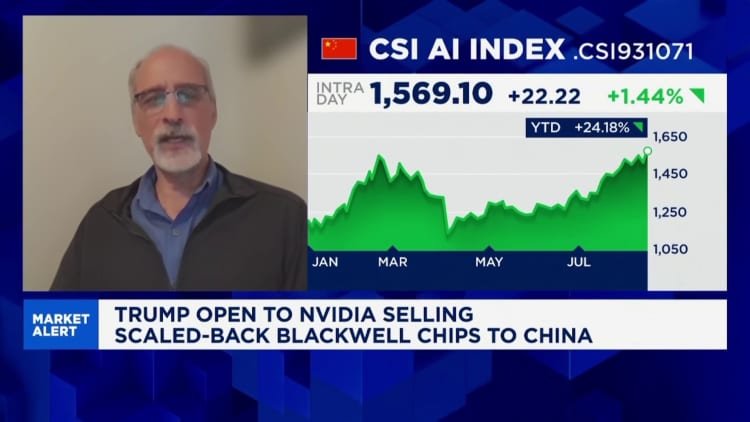Hyundai has been on an absolute tear lately. Its cars look sharp and its EVs feel futuristic without being goofy. But there’s a reason for Hyundai’s madness, and it’s all designed around stealing market share away from competitors by embracing change rather than rejecting it or moving too slowly.
Welcome back to Critical Materials, your daily roundup for all things electric and tech in the automotive space. Also on deck: Honda taps a Silicon Valley startup to build self-driving for its cars and Xiaomi’s automotive arm sure looks like it will turn a profit already. Let’s jump in.
30%: Hyundai Says Automakers Must Fuse AI, Software And Electrification To Stay Competitive

Photo by: Hyundai Canada
Technology is the key, according to Hyundai’s executive chair, Euisun Chung. In a recent interview with Automotive News, Chung gave a crash course in automotive self-preservation. The brand’s leader made it clear that for Hyundai—or any automaker, really—to succeed, it must not only adopt changes to the market quickly, but in a meaningful way that meets customer needs.
That means embracing what Chung calls “breakthrough technologies” in the industry.
No, not tweaks. Not iterative upgrades between facelifts. Full-on breakthroughs that are game-changing to the industry. We’re talking about changes like AI-driven, software-defined vehicles. I know that reads like a bunch of beige corporate buzzwords wrapped up into a car-shaped ball, but it’s not. Chung swears that there are strategies behind the curtain.
Here’s what he told Automotive News in the interview:
The automotive industry is at a crossroads. Innovation has always been essential, but today’s landscape demands that companies constantly challenge themselves.
This means rethinking how business will be done in the future and embracing breakthrough technologies, rather than just inching forward with small steps.
The next chapter of mobility is being shaped by AI, SDVs and electrification. The companies that will thrive are those pushing themselves to lead in these areas. But what matters most is making sure new technologies actually improve people’s lives.
Technology means nothing if it doesn’t serve a real human need. That’s why we’ve always been laser-focused on our customers, constantly pushing to improve safety and quality, value and the experience we offer at every touchpoint, from design to digital services. This customer-first approach is what has driven our success and will continue to guide us forward.
The catch that isn’t really explored is just how rare breakthroughs are. Tech hits hurdles and walls well before a true breakthrough happens. When they finally do become available, it usually means taking a big, expensive risk to be first.
That’s why Hyundai poured billions into its foundation in the U.S. It’s setting the brand up for market saturation in the U.S. while Chinese EVs are knocking on every door in Europe right now. Meanwhile, America is playing tariff chess to prevent that from happening. Hyundai is learning to navigate these uncertain waters better than most.
Executive Chairman Chung comes from a long line of Hyundai leaders who built the company up from scratch. His grandfather, Hyundai’s Founding Chairman Ju-yung Chung, escaped from North Korea and built early infrastructure for transportation (ships and roads). His father, Honorary Chairman Mong-Koo Chung, clawed Hyundai out of the bargain brand reputation it had when it first expanded to the U.S.
Chung clearly believes he can solidify his legacy by embracing the future of mobility and securing a place for Hyundai in it. The Chairman wants Hyundai to be the brand that people trust when the robots roll in and self-driving cars become the norm. That means betting the family farm on software-driven architecture that actually works and doing it in a way that’s affordable and reliable before its rivals catch up.
Separately, I just have to call out what a wild origin story Hyundai’s Founding Chairman had. If you thought Carlos Ghosn’s escape from authorities in a crate was a crazy tale, please read up on Chung Ju-Yung.
60%: Honda Taps Silicon Valley Startup To Build Self-Driving For Its Cars

Photo by: Honda
Honda has never really been cutting-edge in the self-driving space (although the grandaddy of Honda Sensing, Shotaro Odate, has some of the sharpest hair I’ve ever seen). Tesla has Autopilot, GM has Super Cruise and Chinese giant BYD has its God’s Eye system. Honda has Honda Sensing, which is a relatively conservative package of active safety features that comes standard on most cars. Clearly it hasn’t been quite as focused on boundary-pushing tech as Hyundai seems to be right now.
But that’s changing. Honda recently signed a deal with Helm AI, a Silicon Valley startup that specializes in “AI-first software and simulation” that supports all the way up to Level 4 autonomous driving. Helm says it uses primarily camera-based architecture (like Tesla), but can expand the system to integrate with lidar and other sensor modalities.
The term “Startup” is doing a lot of heavy lifting here, though, because Helm has been around since 2016 and already has a bit of Honda money running through its veins.
Bloomberg brings the news:
“This joint development supports Honda’s goal of realizing safe and affordable automated driving technologies for our global customers,” Mahito Shikama, the head of the carmaker’s software defined vehicle business, said.
Honda has been investing in Helm.ai since 2021, including at least $30 million in early stage financing. The closely held startup, which specializes in camera-based computerized perception and simulation software, was founded in 2016 and has raised more than $100 million. In addition to Honda, the company has worked with a number of other automakers and auto parts suppliers.
“We look forward to entering the next phase of production development with Honda, as they expand their in-house efforts to deploy cutting edge autonomous driving technologies in mass market vehicles,” Vladislav Voroninski, Helm.ai’s chief executive officer, said.
Honda quietly touted Helm’s capabilities at CES earlier this year when it showed off the Honda 0 Series EVs. It promised Level 3 self-driving along with only minimal tweaks to its futuristic-looking electric cars. Apparently, Helm will quite literally be at the helm of Honda’s flagship self-driving architecture.
The firm also specializes in the boring stuff, like training the models that a car uses to decide how it should act on the road. This lets automakers use Helm’s tech to deploy a virtual fleet of vehicles and focus only on what CEO Vlad Voroninski calls “interesting cases.” That’s what differs between tailored training and just throwing a bunch of video clips of driving at AI and shouting, “Learn!” into a GPU.
It is interesting to see an automaker choose a solution that isn’t based on Nvidia’s Drive platform today. Many western automakers have turned to Jensen Huang’s tech empire to build out their self-driving needs, with mostly only China looking toward its own home-grown solutions (and only out of necessity).
According to the agreement, Honda and Helm’s tech will be used for the automaker’s mass market vehicles beginning in 2027. Two years on paper might seem like a lot, sure, but that’s an eternity at the pace that autonomous driving tech is developing. 2027 also happens to be the year when we expect the 0 series to go on sale. The full details of Helm’s involvement haven’t yet been disclosed.
90%: Xiaomi Expects To Turn A Profit This Year (Yes, Already)

Photo by: Motor1.com
Profitability, that thing that took Tesla 17 years to turn a full year of, is in reach for Xiaomi’s automotive arm. After—checks calendar—only a year of being on the market, the company’s EV division is looking like it may soon be a money maker.
The company’s president, Lu Weibing, noted during an earnings call earlier this week that the automaker expects to turn its first profitable quarter before the end of the year as net profits of its $30,000 EVs are soaring.
Nikkei has the scoop:
“We hope that in the second half of this year, we can achieve a single quarter or single month profitability,” Xiaomi President Lu Weibing said at an earnings conference Tuesday.
Xiaomi’s consolidated revenue in the second quarter jumped 30% on the year to 115.9 billion yuan ($16.2 billion), the company reported. Net profit more than doubled to 11.8 billion yuan.
This marks the fifth consecutive quarter of increases in revenue and profit and record highs for both.Xiaomi’s EV segment logged an operating loss of 300 million yuan. The company has made roughly 30 billion yuan in EV-related investments over the past three years.
One of the ways that Xiaomi managed to turn a profit so quickly is by using its late entry to market to its advantage rather than as an excuse for weakness. Sure, it wasn’t the first company to build an EV in China (nor the hundredth), but it was already a trusted brand and had tons of know-how in both tech and business. This allowed the company to use its capital to easily tap into China’s well-developed EV supply chain.
It’s not all flowers and rainbows for Xiaomi, though. Rapid growth has its own set of problems.
Xiaomi is growing a bit too quickly. In fact, delivery time for the SU7 is already as long as 41 weeks. Ordering one of the newly-launched YU7s could mean waiting as long as 58 weeks to take delivery. This alone puts Xiaomi at risk of losing buyers to other brands that can position a compelling market alternative to either vehicle, despite the brand pumping out more than 30,000 vehicles each month. The CEO himself recently suggested that impatient buyers look elsewhere.
The company is also learning the car business still. Allegations of pressuring buyers to pay for their vehicle well in advance for delivery have hit Chinese social media, according to Nikkei. Then there was that whole debacle of an over-the-air power nerf (of 600 horsepower!), or let’s not forget the $6,000 carbon fiber hood with fake aero ducts.
Either way, this hasn’t stopped Xiaomi’s warpath. Europe could be next on the company’s radar, meaning that production capacity could soon be even more of an issue if it doesn’t build out additional capacity soon.
100%: Do You Want Autonomy In Your Next Car?

Photo by: Ford
According to recent surveys, hands-free driving is one of the most requested features in new cars. I know that Elon Musk gets a lot of crap for his focus on autonomy (and the ability for Tesla to execute on the promises), but he might be onto something.
I’ll admit that I do enjoy some Autopilot on road trips. It definitely takes the edge off of long drives, and true hands-free systems like Ford’s BlueCruise and GM’s Super Cruise also speak to the comfort of semi-autonomous systems on the highway.
Are you looking for autonomy in your next car? If so, what system are you most drawn to? Let me know in the comments.







